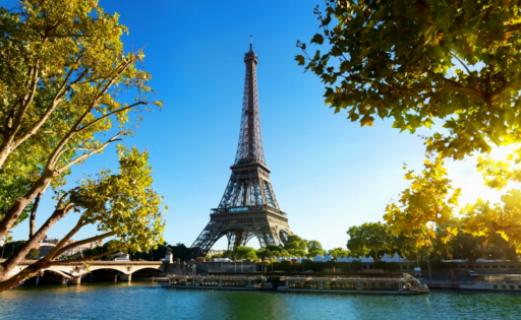Tucked away in the hills of Paris lies the charming and enigmatic neighborhood of Montmartre. Known for its stunning views, bustling cafes, and iconic Sacré-Cœur Basilica, Montmartre has long been a hotspot for artists, poets, and revolutionaries. However, beyond the tourist attractions and crowded streets lies a hidden world of artistic gems, scandalous tales, mysterious tunnels, and revolutionary thinkers waiting to be discovered. Step off the beaten path and delve into the untold stories of Montmartre, where the true soul of this eclectic neighborhood comes to life.

Hidden Artistic Gems of Montmartre
However, beneath the hustle and bustle lies a hidden world of artistic treasures waiting to be discovered. Montmartre has long been a haven for artists, both famous and emerging, seeking inspiration and creative solace in its picturesque streets and charming cafes.
One of the most enchanting artistic gems of Montmartre is the Musée de Montmartre, located in the historic Maison du Bel Air. This unique museum not only showcases the works of renowned artists such as Renoir, Modigliani, and Utrillo, but also offers a glimpse into the bohemian lifestyle that defined Montmartre in the late 19th and early 20th centuries.
However, the artistic allure of Montmartre extends beyond the walls of museums and galleries. Hidden throughout the neighborhood are countless murals, street art installations, and hidden studios waiting to be stumbled upon by the curious traveler. From the colorful graffiti of rue Dénoyez to the whimsical art of the Montmartre Grape Harvest Festival, the creativity of Montmartre's artistic community is on full display for those willing to explore off the beaten path.
And let us not forget the charming cabarets and theaters that have long been an integral part of Montmartre's artistic landscape. From the legendary Moulin Rouge to the intimate Lapin Agile, these venues have played host to countless performers and artists throughout the years, each adding their own unique flair to Montmartre's rich tapestry of creativity.
In conclusion, Montmartre's hidden artistic gems serve as a testament to the neighborhood's enduring spirit of artistic innovation and expression. For those willing to venture beyond the tourist hotspots, Montmartre offers a world of artistic wonders just waiting to be discovered.
Scandalous Tales of Montmartre's Bohemian Lifestyle
For centuries, Montmartre has been a haven for bohemian artists and writers who have embraced a scandalous and unconventional way of life. The neighborhood has a deep-rooted history of rebellion against societal norms, nurturing a community of free-spirited individuals who are unafraid to challenge the status quo.
Montmartre's bohemian lifestyle is characterized by its vibrant art scene, where painters such as Henri de Toulouse-Lautrec and Pablo Picasso sought inspiration in the colorful streets and bustling cabarets. These artists lived on the fringes of society, rejecting traditional bourgeois values in favor of a more unconventional and liberated existence.
The cabarets of Montmartre were notorious for their scandalous performances and raucous parties, attracting hedonistic revelers who indulged in all forms of debauchery. The Moulin Rouge, with its risqué can-can dancers and provocative acts, epitomized the libertine spirit of the neighborhood and became a symbol of Montmartre's bohemian lifestyle.
Montmartre's bohemian residents were known for their unconventional relationships and avant-garde artistic pursuits. The neighborhood was a melting pot of ideas and ideologies, with poets, writers, and philosophers engaging in spirited debates and pushing the boundaries of creativity.
Despite the challenges and hardships they faced, the bohemians of Montmartre thrived in their unique and unconventional lifestyle, leaving behind a legacy of art, literature, and revolutionary thought that continues to inspire and captivate visitors to this day.
Mysteries of Montmartre's Underground Tunnels
Nestled beneath the charming streets of Montmartre lies a mysterious network of underground tunnels, shrouded in secrecy and intrigue. These tunnels, dating back centuries, hold a plethora of secrets waiting to be uncovered by the curious traveler.
Rumored to have been used by smugglers, revolutionaries, and even artists seeking inspiration, these passageways have a rich history that adds an air of mystique to the already enigmatic Montmartre. Some say that these tunnels were used during times of war to hide treasures or to discreetly transport goods, while others believe that they served as meeting points for clandestine groups plotting against the authorities.
Exploring these underground tunnels is not for the faint of heart, as they are dimly lit and prone to flooding. However, for the adventurous traveler willing to brave the depths of Montmartre, the experience is sure to be one filled with excitement and wonder.
As you wander through the labyrinthine passages, you can't help but feel a sense of awe at the history that lies beneath your feet. Each twist and turn reveals a new mystery, beckoning you to delve deeper into the secrets of Montmartre's underground world.
Whether you believe the tales of smugglers and revolutionaries or simply appreciate the atmosphere of intrigue that surrounds these tunnels, one thing is certain - Montmartre's underground tunnels hold a wealth of mysteries just waiting to be unraveled by those brave enough to seek them out.
Montmartre: A Haven for Revolutionary Thinkers
Montmartre has long been known as a haven for revolutionary thinkers. Throughout its history, this neighborhood in Paris has attracted artists, writers, and other creatives who were not afraid to challenge societal norms and push the boundaries of traditional thinking. From the Impressionist painters who rebelled against the artistic establishment in the 19th century to the bohemian poets and philosophers of the early 20th century, Montmartre has been a breeding ground for intellectual and cultural revolution. The streets of Montmartre have echoed with the voices of those who dared to dream differently, to question authority, and to imagine a world beyond the constraints of convention. This spirit of rebellion and innovation continues to define Montmartre to this day, making it a place where free thinkers and independent spirits can find inspiration and community.
